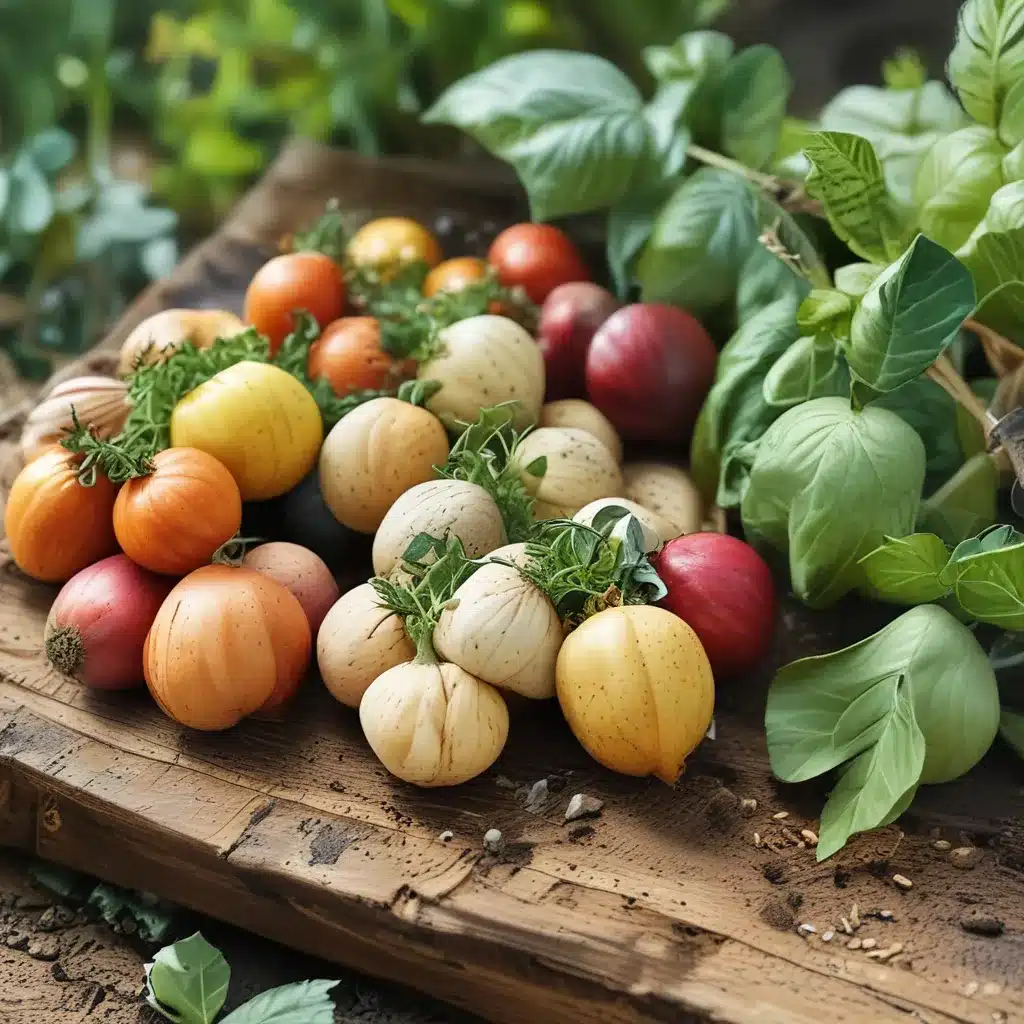
Unlocking the Treasure Trove of Heirloom Seeds
Ah, the joys of gardening – the earthy scent of freshly turned soil, the vibrant colors of blooming flowers, and the satisfaction of plucking juicy, ripe veggies straight from the vine. As a devoted community-supported agriculture (CSA) member, I’ve experienced these delights firsthand. But did you know that one of the most rewarding aspects of gardening lies not just in the bounty you reap, but in the seeds you save?
That’s right, my fellow green-thumbed enthusiasts – the secret to a sustainable, self-sufficient garden lies in the ancient art of seed saving. By cultivating your own organic, heirloom varieties, you can not only ensure a bountiful harvest year after year, but also preserve the rich genetic diversity of our plant heritage. It’s a truly empowering and fulfilling journey, and one that I’m excited to share with you today.
Heirloom Varieties: Preserving the Past, Shaping the Future
Heirloom plants are true treasures, handed down through generations and beloved for their unique flavors, vibrant colors, and storied pedigrees. Unlike modern hybrids, which can be temperamental and unpredictable, heirlooms are stabilized varieties that reliably reproduce the same characteristics in each successive generation. As the team at Roots and Refuge Farm explains, “Heirlooms are stabilized varieties which means that the seeds will grow the plant you are expecting as opposed to modern hybrids which are often unstabilized and will produce seeds that are either sterile or that grow plants with different characteristics than the parent plant.”
This makes heirlooms the ideal choice for budding seed savers like ourselves. By carefully selecting and preserving the seeds from our favorite heirloom plants, we can not only enjoy their unique flavors and appearances year after year, but also play a vital role in safeguarding the rich tapestry of our agricultural heritage.
Avoiding Cross-Pollination: The Key to Maintaining Purity
Of course, as any seasoned gardener knows, cross-pollination can be a common challenge when it comes to seed saving. Roots and Refuge Farm offers some excellent tips on avoiding this pitfall, including physical barriers, strategic plant spacing, and hand-pollination techniques. By taking these precautions, we can ensure that our heirloom seeds remain true to their lineage, untainted by unwanted genetic influences.
But what if you’re like me, and you occasionally find yourself with less-than-perfect produce – the tomato with a strange blemish, the pepper that got a little too much sun? Fear not, my friends! Roots and Refuge Farm suggests that these “imperfect” fruits and veggies can actually be hidden treasures when it comes to seed saving. I’ve had great success salvaging seeds from slightly damaged or overripe produce, preventing those precious resources from going to waste.
Mastering the Art of Seed Extraction and Drying
Now, I know what you might be thinking – “Seed saving? Sounds like a lot of work!” But trust me, once you get the hang of it, the process is surprisingly straightforward and satisfying. As the team at Roots and Refuge Farm explains, the key is to let your plants fully mature and dry before harvesting the seeds.
For fruits and veggies like tomatoes, peppers, and squash, this means leaving them on the vine until they’re at their peak ripeness. Then, it’s simply a matter of extracting the seeds and laying them out to dry. For root vegetables and greens, the process involves allowing the plants to bolt, or flower, before collecting the seeds.
One of my favorite techniques is the “fermentation method” for seeds like cucumbers and melons. By letting the seeds soak in water for a few days, the natural protective coating is dissolved, making them easier to dry and store. It’s a bit of a messy process, but the results are well worth it – clean, viable seeds that will reliably sprout and grow in your garden.
Cultivating a Seed-Saving Mindset
As I’ve delved deeper into the world of seed saving, I’ve come to realize that it’s about so much more than just practical gardening. It’s a connection to our agricultural past, a way to honor the hard work and ingenuity of the generations who came before us. And it’s a profoundly empowering experience, knowing that you hold the key to a bountiful, self-sustaining future.
As the wise gardener in the video so eloquently states, “Seed saving is not difficult and if you haven’t done it yet, now is the time to start.” Whether you’re a seasoned green thumb or a budding gardener, the joy of cultivating your own organic, heirloom varieties is simply unparalleled.
So, my fellow CSA members, I urge you to embrace the seed-saving mindset. Dive into the rich history of your favorite heirloom plants, get your hands dirty with the process of extraction and drying, and revel in the satisfaction of watching your hard work blossom into a thriving, self-sustaining garden. Who knows – you might just uncover a few “seed saving secrets” of your own along the way!
And remember, if you ever need a little extra inspiration or guidance, the team at Thornapple CSA is always here to lend a helping hand. Happy gardening, and happy seed saving!



